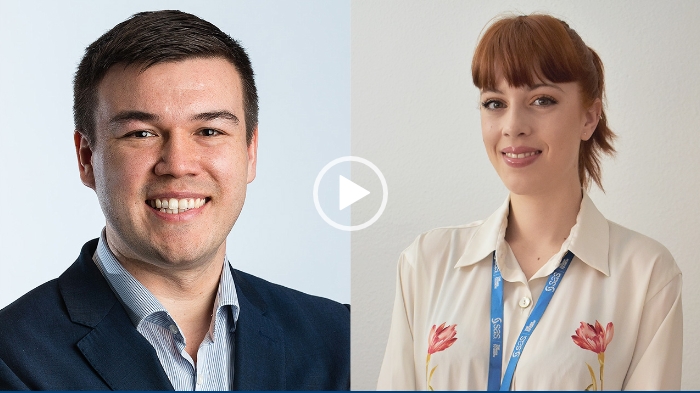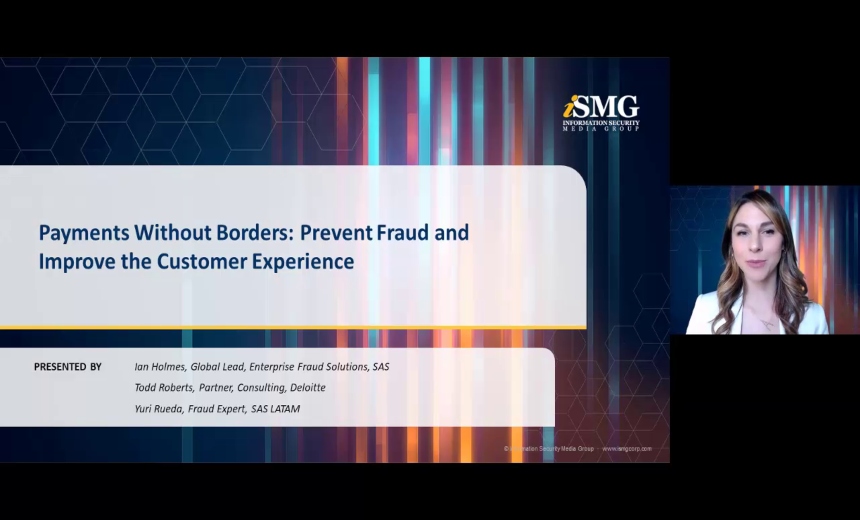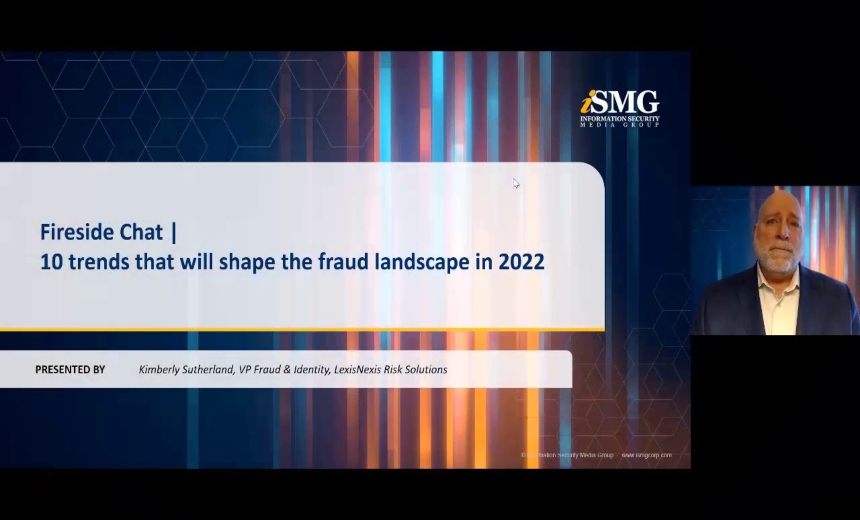Fraud Prevention: Consumers Will Help
Survey Finds Consumers Eager to Work with InstitutionsAn international consumer study conducted by ACI Worldwide finds consumers want to work more with their primary banking institutions to detect and prevent fraud.
The survey from ACI, which provides payment platforms and card-fraud prevention technologies, included more than 5,200 consumers in 17 countries. Aite, a financial-services consultancy, worked with ACI to analyze the results.
The one common takeaway: consumers want to know when suspicious transactions are attempted.
"I think there are a lot of opportunities for improvement in the message," says Shirley Inscoe, a leading fraud analyst for Aite during an interview with BankInfoSecurity's Tracy Kitten. [transcript below].
"There's a lot of fear and concern that consumers have that I believe could be minimized if there was a better job done of communication and outreach by the [card] issuers," Inscoe says.
Mike Braatz, senior vice president of payments fraud at ACI, echoes Inscoe's sentiments. "Make sure your consumers are educated on the things they should be doing to protect their accounts and their information," he says.
Braatz also notes the importance of fraud detection, saying newer detection capabilities enlist consumers in the fraud fight through the use of e-mail, voice and text notifications.
During this interview, Braatz and Inscoe discuss:
- How and why the changing payments landscape will enhance, not diminish, consumer concerns;
- How consumers want to be notified of potential fraud;
- Steps all issuing institutions can take to involve consumers and business in the fraud-fighting process.
Braatz oversees product strategy and delivery of ACI's payments fraud product line. Before joining ACI, he served as general manager of Memento, a provider of enterprise fraud-management technologies. He also has held executive-level marketing and product management positions at Bluesocket, PanGo and Optiant, and he was a strategy consultant with Bain & Company, where he worked with clients in the enterprise software and financial services industries.
Inscoe, who joined Aite in March, has 30 years of banking experience in enterprise fraud and payments issues. She has served as the chair of the BITS Fraud Reduction Steering Committee and co-chair of Early Warning Services' Advisory Committee, and she has been a member of ABA's deposit account fraud and payment systems committees. Before joining Aite, Inscoe was the director of financial services solutions at Memento Inc., where she was responsible for guiding the company's overall strategy and supporting product development, marketing and sales related to payments risk mitigation. Before Memento, Inscoe served as senior vice president and director of payments strategy for Wachovia Bank.
Fraud Survey
TRACY KITTEN: Can you give us some background about how and when this survey was conducted?
MIKE BRAATZ: As a provider of payments and payment-fraud solutions to financial institutions, processors and retailers, we at ACI want to be aware of the types of trends that impact these customers. This particular survey focused on fraud, because we wanted to understand how our customers were impacted by fraud and how they're responding to what is, really, an ever-changing threat. This is our third year of doing the global card fraud study. In September, we surveyed more than 5,200 consumers around the world in 17 countries, and we think the result is a pretty comprehensive look at current consumer attitudes and reactions to card fraud.
Consumer-Reported Card Fraud
KITTEN: Mexico and the U.S. had the highest incidents of consumer-reported card fraud, while the Netherlands and Sweden had the lowest. Is the U.S. continued reliance on magnetic-striped card technology to blame?
INSCOE: I think that reliance is somewhat to blame, but I would say that's very guarded. I would say that more of that is that there are very high card penetration rates in both the United States and Mexico, and both are very high fraud environments overall. The United States is viewed as the country where a lot of the money is, and so we're targeted from fraud rings around the world for all types of financial fraud. I believe those factors have more to do with it then the EMV [Europay, MasterCard, Visa standard] chip card.
What other countries have seen is that when those cards are rolled out, often the fraud moves to a card-not-present environment. So the point-of-sale loss has declined, but credit card fraud, overall, doesn't necessarily decline over the long term.
Payment Card Reissuance
KITTEN: How much would you say card issuers throughout the world are spending on payment card reissuance?
INSCOE: I can't gauge what a total dollar figure is, but a source at a very large U.S. card issuer recently told me that they spend between $3 and $5 per card to reissue, So, as you can, see that's quite a hefty cost that they bear, particularly in cases of data breaches.
BRAATZ: There are a couple of additional costs that the issuers bear that are really indirect, but they are important costs. One is, consumers are more likely to move that card that was the victim of fraud to the back of the wallet and use it less often than they were before the fraud incident. The other thing that the survey found is that consumers are likely to simply switch issuers all together, once they have experienced fraud on a given card. In addition to the cost that Shirley mentioned, those are two big indirect costs that are looming for these issuers, if they don't pay enough attention to the fraud threat.
Post-Fraud: Alternate Payment Methods
KITTEN: Your survey found that 56 percent of cardholders use cash or some type of alternate form of payment over debit or credit. What types of alternate payment methods do they most often use?
INSCOE: We didn't really explore in the survey what other mechanisms they used other than cash; but I think it's important to point out that they often said the card that experienced fraud went to the back of wallet. For example, if they experience debit card fraud, they might have used a credit card instead.
Trends for 2013
KITTEN: What would you say is the message here for financial institutions and card issuers as they look out to 2013?
INSCOE: I think there are a lot of opportunities for improvement in the messaging, particularly when it comes to the messaging that card issuers use with their clients. There's not a good job being done, as the study bears out, around education in general as to how consumers can protect themselves. They're not a good job of helping customers understand their institution's fraud policy and processes, and there's a lot of fear and concern that consumers have that, I believe, could be minimized if there was more communication and outreach by the issuers. If they could really do a good job with communication, outreach and education, they would see that back-of-wallet behavior trimmed down and, perhaps, see attrition rates decline as well.
KITTEN: What were some of the most surprising trends that were revealed in the survey?
INSCOE: One of the things that I thought was somewhat surprising was how very interested consumers are in working with their financial institutions, and being involved in the process when potential fraud is detected. Consumers made it clear they want to be notified; they want to be made aware; and they want to be part of the process. Most preferred mobile phone calls, SMS/text messages, sometimes e-mails, and, in a few countries, even calls at home. But, clearly, they want to be more involved than they have been to date.
BRAATZ: What I found interesting, in addition to what Shirley just said, is that consumers' top fear in this year's survey was identity theft. Out of a long list of potential threats that they face, identity theft rose to the top, ahead of online banking fraud or some of the other threats that have traditionally been high on the list. What this reflects is that consumers, because of continued education efforts by the financial community at large, are really starting to understand that identity theft is the precursor to fraud; and the fact that they fear it, I view, as a positive sign. They understand that they have to protect that information, because eventually, if that information is compromised, it will lead to fraud on their account, fraud on their card or, inevitably, funds lost.
Fraud Patterns
KITTEN: The survey includes consumer perspectives about payment card and bank account fraud. Where was most of the fraud felt?
INSCOE: We definitely saw that credit cards are leading the way in fraud, and falling not too far behind were debit cards.
KITTEN: Then what about market variations?
INSCOE: We saw significantly higher rates of fraud in some countries, and, again, I think a lot of that can be attributed to the types of payments. We in America use cards a lot, and that's not common the world-over. In some countries, mobile payments are more popular than they have become here to date; and other payment mechanisms, such as checks, to some degree are still being used. But definitely in the Americas, Mexico and the United States we saw those very, very high card fraud rates. In some countries, in Europe, for example, we see lower card-penetration rates and far lower usage of those cards, and that really was demonstrated in the rate of fraud that they saw as well.
Recommendations for Institutions
KITTEN: What recommendations do you have for banking institutions?
INSCOE: I would really recommend that institutions provide fast, easy recovery processes for their customers who experience fraud. As I mentioned earlier, they should educate their customers about what their fraud policy is. For example, when they're issuing a replacement card because of a data breach, assure the customer that the card is safe to use, so that it doesn't go to the back of the wallet and defeat the purpose of issuing the card. In general, just educate, reach out and communicate.
BRAATZ: To add to that point, what I've seen as a major trend over the last few years is that the criminals themselves are working together and collaborating to commit fraud. What the survey found is that consumers want to collaborate with their financial institutions to fight fraud, and that's a really good sign. I think the good news for financial institutions is that there are technologies that exist today that can make it easy for them to enlist their customers in that fight with them. There are messaging and notification technologies to make it really easy to get notifications out to mobile phones. And that's just one example.
Prevention, Detection Technologies
KITTEN: Where should financial institutions focus their fraud prevention and detection technologies in 2013?
BRAATZ: Any good fraud prevention program is going to start with the education process. Make sure your consumers are educated about the things they should be doing to protect their accounts and their information. Have good fraud monitoring systems in place. I think some of the newer capabilities that are enlisting consumers in the fight include these notification systems I mentioned earlier.
INSCOE: On a slightly higher level, payments are changing in our country dramatically. Not only are EMV and NFC [near-field communications] cards coming out, but with the wide variation of mobile-payment devices from companies like Intuit, LevelUp and Square, they all look a little different. They all work a little differently. I think there's going to be a lot of consumer confusion, and fraudsters are well known for taking advantage of consumer confusion. I agree with everything Mike just said, and I would just add another level of encouragement that we have better consumer education in light of all of these payment changes.



















